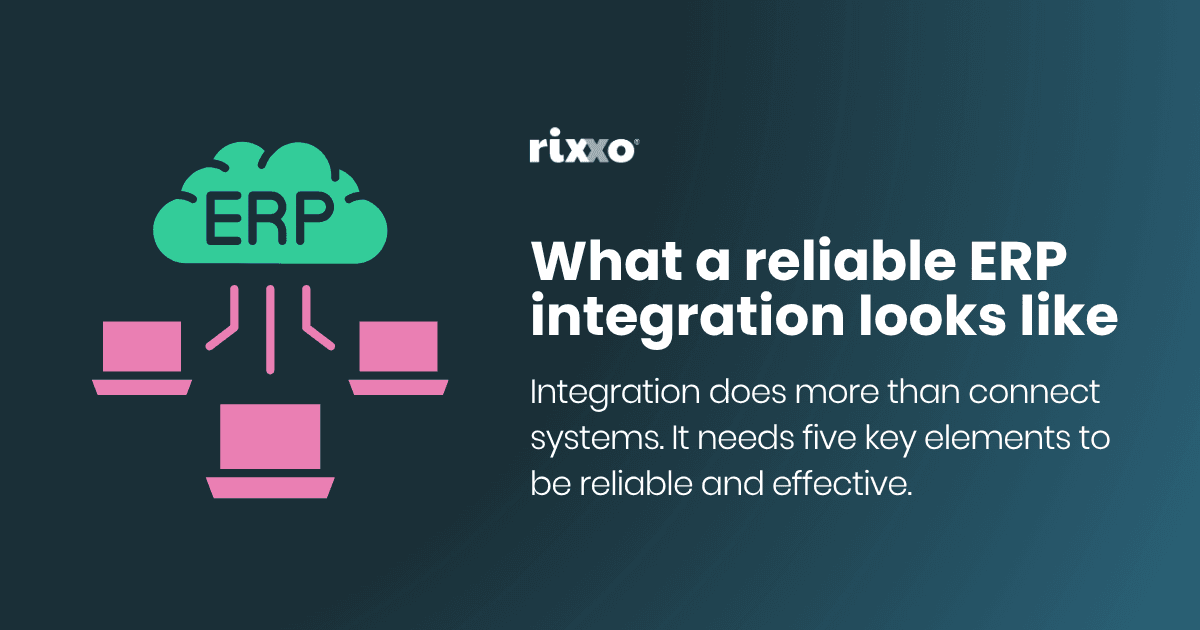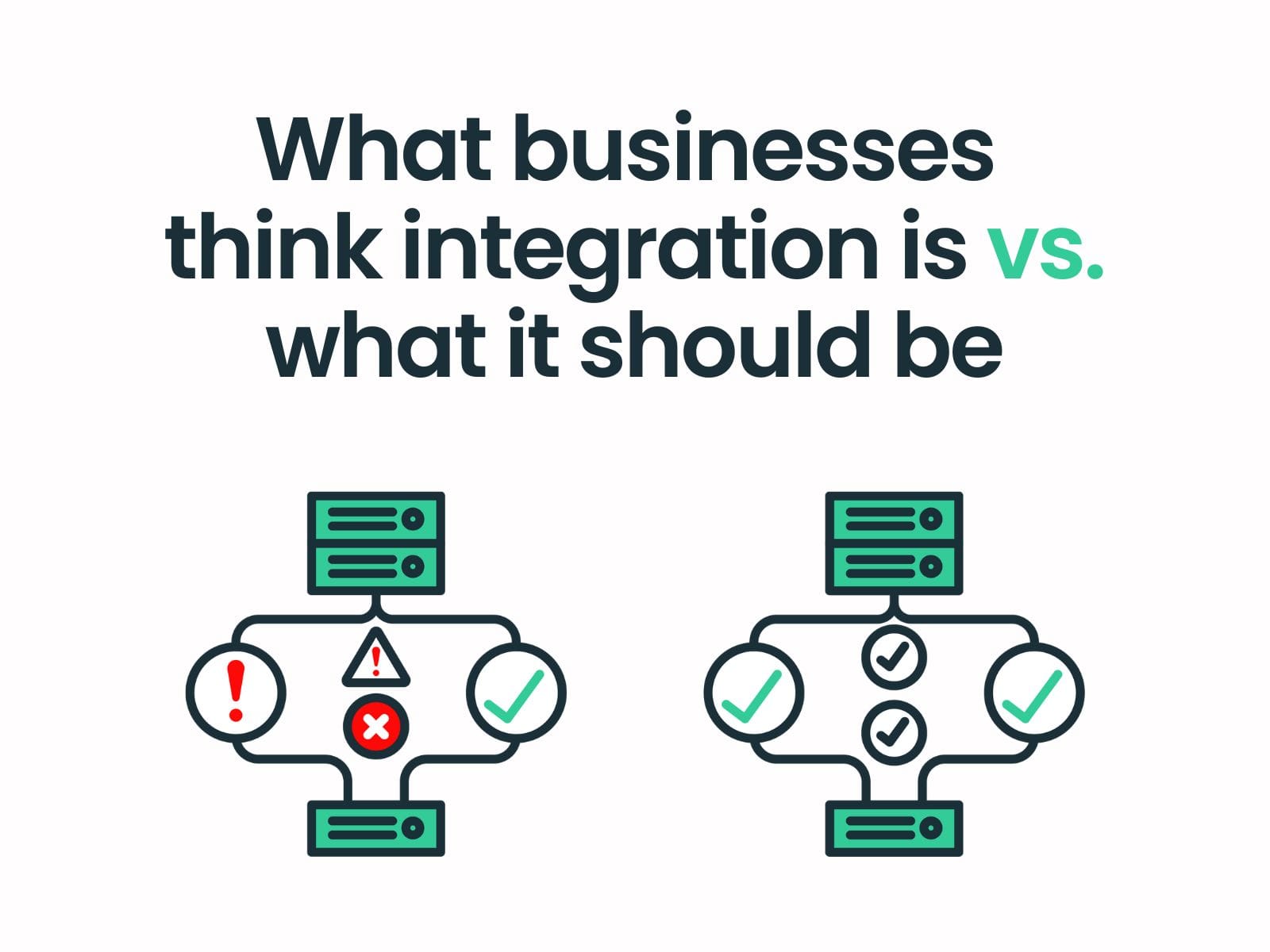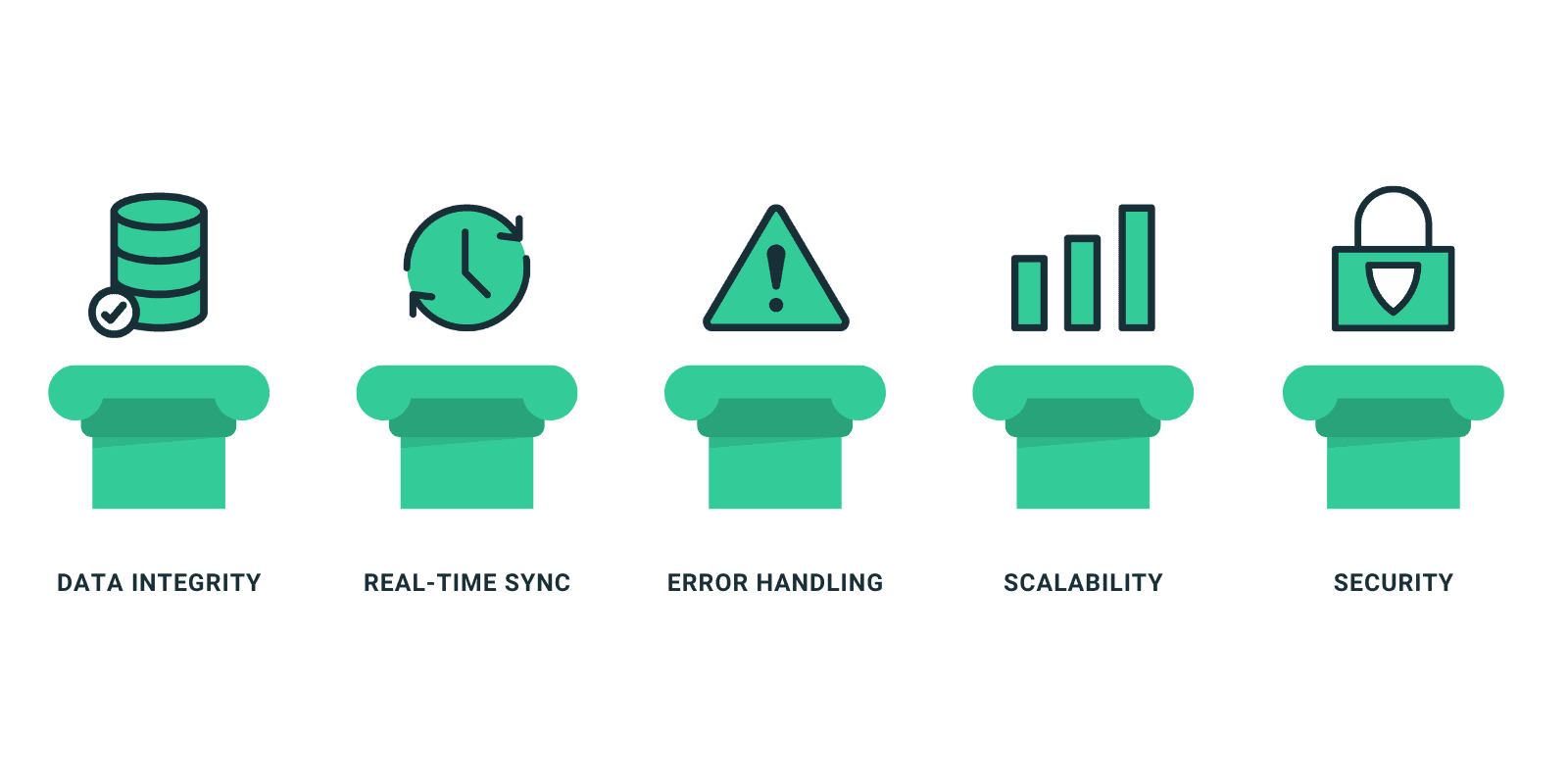What a reliable ERP integration looks like

When systems talk to each other, and processes are automated, it “should” make life easier. But all too often, ERP integrations fall short. Yes, they move data, but by introducing errors and requiring constant maintenance, the integration can create just as much work as it saves.
This article is for businesses that want more than just a functioning link between systems. In it you’ll learn:
- Why many “working” integrations still fail your business
- What a reliable ERP integration looks like
- The five pillars that every integration should be built on
- Real-world results from a business that turned integration frustration into a growth advantage
Why “it works” often isn’t good enough
When assessing your current integration, ask yourself:
- Is your data always accurate?
- Does the integration reduce admin and save time?
- Can it run without constant checking?
If you answered no to any of those, your integration isn’t performing at its full potential and is costing you time and money.
We’ve seen clients with stock feeds that will update the eCommerce store, but don’t mark out-of-stock items as unavailable. Others have orders that transfer, but with the wrong values. Some sync most product data, but still need manual edits.
These problems waste time, introduce errors, and hinder your business’s productivity. Simply moving the data isn’t enough. Without a solid plan and thorough, real-world testing, minor issues can quickly escalate into significant costs.
A real-world example


A client of ours, C&A Building Products, faced exactly this challenge.
Their Magento-to-Orderwise integration “worked,” but still caused friction in the business. Orders required manual checks, product data was outdated, and new features were difficult to roll out.
After partnering with Rixxo, the integration experts, the results were transformative: we provided a tailored Magento Orderwise integration that syncs customer, company, product, stock, and order data, drastically cutting errors and improving efficiency across the business.


What true synchronisation looks like:
- The data is accurate
- Updated at the right time
- Key actions, such as marking items out of stock, happen automatically
Many assume that if data moves between systems, the integration is complete. But there’s a big difference between moving data and syncing it properly.
A common mistake is assuming “our systems talk” means the work is done. However, if products are incorrectly shown as in stock when they’re not, or orders are processed with missing details, the integration is failing.
Common issues arise from missing:
- Data validation
- Error handling
- User visibility
You also need a plan for when things go wrong. If data fails to sync, will it retry? Who gets notified? How quickly can it be fixed?
At Rixxo, every integration is built to:
- Automatically retry failed data
- Provide clear, readable error logs
- Send instant alerts for critical issues
This ensures problems are caught early and resolved fast, before they cause bigger disruptions.
The 5 pillars of a reliable ERP integration
If your integration doesn’t do these things, it may look functional but still be fragile.


A strong integration needs five key elements to be reliable:
1. Data integrity
Data must be accurate and in the right format before it syncs. Even small changes, like a renamed field, can cause issues. Validating and logging data at every step helps prevent problems.
2. Real-time synchronisation
Some data, like stock or orders, should sync quickly. Others, like product details, can be updated on a schedule. Constant syncing can overwhelm systems. A good integration strikes a balance between speed and stability.
3. Error handling and monitoring
You should know when something goes wrong and why. Our integrations retry failed data, log all errors, and send alerts when something critical breaks. This keeps everything running smoothly.
4. Scalability
As your business grows, your integration should scale. Whether you’re adding more sites or new systems, the setup must handle higher volumes and complexity without falling apart.
5. Security and compliance
If your integration handles sensitive data, it must follow standards like GDPR or PCI-DSS. This means encrypting data, controlling access, and building compliance from the start.
The real-world impacts of reliable software integration
A strong ERP integration improves your business across the board. Here are the key positive impacts you can expect from a well-executed ERP integration:
1. Improved efficiency and decisions
A reliable integration should keep systems in sync so your team doesn’t waste time fixing problems. For example:
- Syncing stock avoids overselling
- Auto-sending orders speeds up fulfilment
- Shared customer data helps teams work faster


For C&A Building Products, automating order flow between Magento and Orderwise meant orders now go straight to the warehouse, eliminating manual input. Customers can view their credit balances and past orders online, reducing service calls and improving the experience. Product data updates automatically, reducing errors and keeping the site accurate.
2. Fewer errors, less overhead
Automating data transfer removes human error and frees up your team to focus on higher-value tasks.
3. Greater scalability
As your business adds new tools or markets, the integration can adapt. You shouldn’t need to rebuild every time you grow.
4. Better experiences
With accurate, real-time data, your team can resolve queries faster, and your customers get a smoother, more reliable service.
Our approach: Making integration strategic, not just functional
At Rixxo, we build integrations with long-term success in mind, adopting a consultative, platform-agnostic approach. This means we are not ideological or tied to our “favourite” tools, instead, we only recommend what we know will work for your given situation, whether that’s a direct connection, middleware, or iPaaS.
We start by understanding your needs. Some businesses require a straightforward connection between a single eCommerce store and an ERP. Others may need to connect multiple systems across regions.
For C&A, our Foundations™ process included site visits and interviews to understand exactly how they used Orderwise. We discovered that off-the-shelf connectors wouldn’t expose the data fields they relied on. Instead, we utilised custom API endpoints and created a shared Integration Planner to ensure alignment from the outset.
Built on collaboration and transparency
You know your data best. We work closely with you to plan, test, and adapt the integration as needed. This approach ensures the solution fits your real-world use, not just a project brief.
Since launch, C&A’s integration has continued to improve. We added retry logic, new payment methods, and real-time error logs within their admin area, giving them more control and independence.
What to look for in an integration partner
A strong integration partner does more than “connect systems”, they help you plan for long-term success. The right partner will ask thoughtful questions, challenge assumptions, and build for scale.
Here are some key questions they should explore with you:
- What business goal are you trying to achieve?
- What specific problem are you solving?
- What’s your monitoring and alert process?
- How will the integration scale as your business grows?
- What happens when something breaks?
- Which system is the source of truth for each type of data?
- When should syncing happen — on events or a schedule?
- Will you need data transformed to match system formats?
Integration is a business tool, not just an IT task. It supports your operations, enables growth, and improves decision-making. When treated as part of your business strategy, not just an IT task, it delivers far more value.
Conclusion: Beyond “it works”
Just because an integration works doesn’t mean it’s helping your business. Without accuracy, visibility, and scale, it may be holding you back.
A good ERP integration helps you work faster, make better decisions, and prepare for growth.
Let’s talk about how Rixxo can make your systems work better together. Automated processes, less manual work, and more room to grow. That’s the power of a reliable ERP integration.
